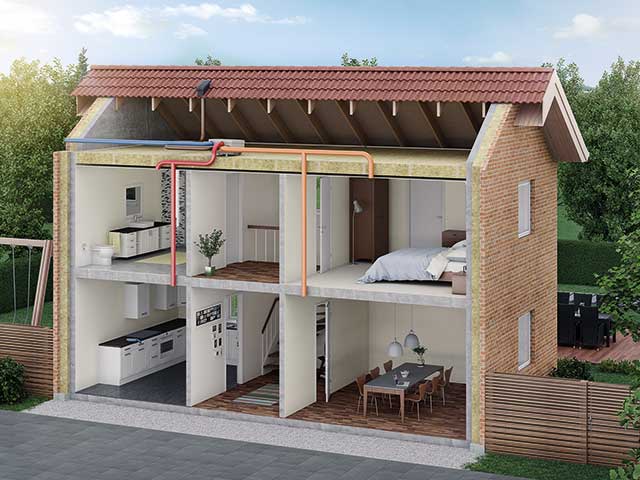
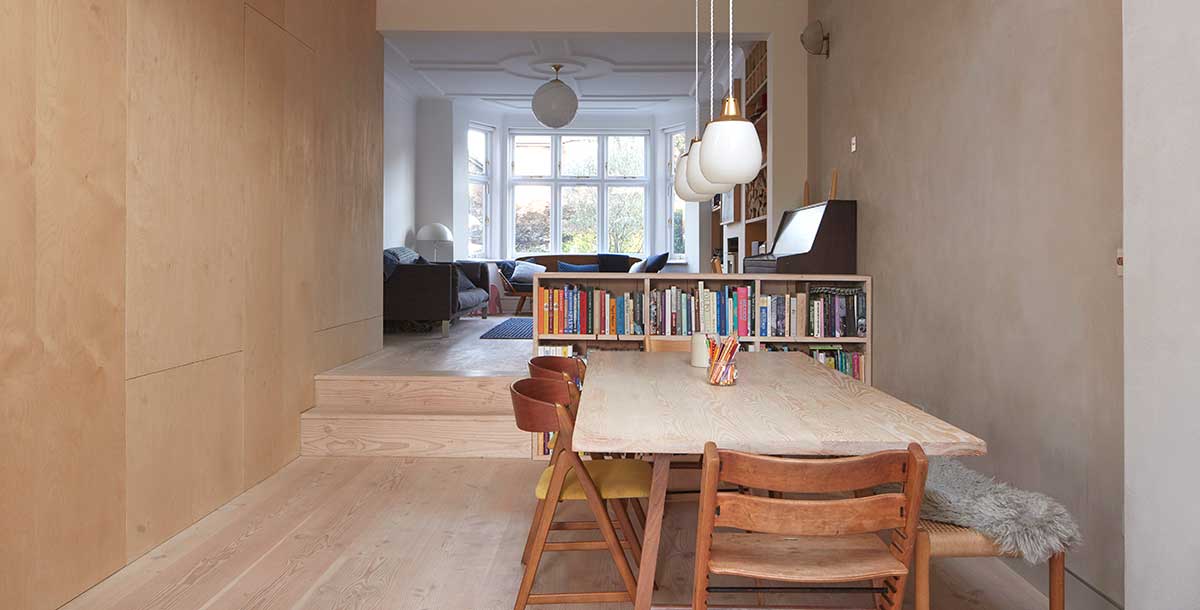
Whether you’re self-building or renovating, there are important factors to consider when specifying MVHR, from installation to maintenance.
Mechanical ventilation with heat recovery (MVHR) is a system that circulates warm, fresh, filtered air around the home. Filters in the main unit remove particles so that the circulating air is free from pollutants. Usually installed in a loft, basement or plant room, the air-handling unit is the hub of the system. It is connected to a series of ducts that are attached to extraction and supply points.
Stale air is drawn out of each room at the extraction point, passed through a run of ducting to a heat exchanger and expelled outside. The extracted warmth is transferred via the heat exchanger to fresh air that flows through a separate run of ducting into the rooms.

MVHR should be installed in a well-insulated, airtight home where warmth isn’t going to leak out via the building fabric. Installation is more straightforward in a self-build, where it can be designed into the plans from the start. However, it is possible to incorporate the system into a renovation. Homes with open fireplaces are not suitable as the air bricks that supply air to the fire make the spaces too draughty.
‘When you walk into a home with well- functioning MVHR, you feel the freshness and warmth in the air,’ says Patrick Chester, project manager and Passivhaus consultant at Enhabit. ‘The airflow is constant but low, so the system is near-silent and ensures there’s no build-up of excess humidity, carbon dioxide or toxins from gas appliances.’
Filters also remove potentially harmful particles from the incoming air. ‘The filters remove pollution and airborne allergens, such as pollen, which can be beneficial for allergy sufferers,’ says Larry Soper, technical training manager at Envirovent.
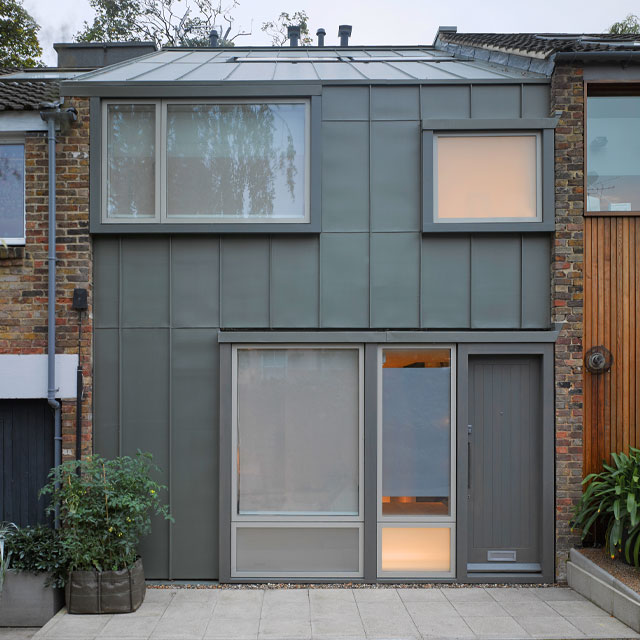
Designed to Passivhaus principles, this home required an effective form of ventilation, so the architect specified an MVHR system from Service Vent. Project by Paul Archer Design. Photo: Andy Stagg
There are several things to bear in mind when choosing MHVR. ‘The highest quality units are able to recover 96% of the heat, while the poorest recover 70% or less,’ explains Patrick.
Selecting a model that runs quietly is very important. This aspect of performance is measured in decibels (dBA), with lower numbers indicating a lower noise level. Most main units operate at about 40-45 dBA, similar to a fridge freezer, but this doesn’t matter so much as the unit is usually installed away from living spaces. Check the noise level of the air valves in each room too. They should be less than 25 dBA.
Take a close look at the controls and what they provide. ‘Are they easy to use? Is wireless functionality available? Are humidity and temperature monitored automatically?’ says Patrick. Check that there is a F7 pollen filter for the fresh-air intake, especially if anyone in your home suffers from asthma or allergies. Some units only have a G4 sponge filter, which keeps insects, hairs, large pollen spores and dust out. The F7 blocks smaller pollen spores, dust, bacteria and some smoke/oil fumes. If you want to zap everything, though, an electrostatic filter is even better.
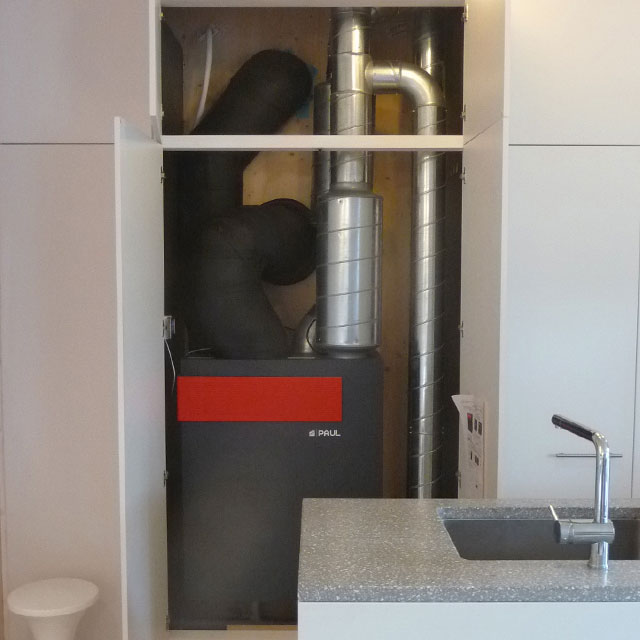
This PAUL Novus 300 MVHR system was specified for a new-build Passivhaus by Tectonics Architects via Green Building Store
The unit itself should be well insulated. ‘It’s no good having a model with a great heat exchanger if the recycled warmth gets lost through the unit’s skin,’ says Clarissa Youden, associate director at Total Home Environment. ‘Check that there is about 30mm thermal and acoustic insulation to the inside of the unit on the specification sheet.’
You should also consider an automatic summer bypass. In warmer months the heat from the outgoing air will not be recycled, but you’ll still get a fresh incoming flow. ‘With the UK’s erratic weather, having a modular bypass that automatically opens in specific increments when the temperature changes is a must,’ says Clarissa. ‘But manual ones can be inconvenient.’
There are many variables that will affect the final cost of a system, from the size of your home to the type of ducts used. ‘A good-quality MVHR, including the ducting, insulation and the controller, costs anywhere between £2,500 and £7,000,’ says Clarissa. Installation is likely to cost upwards of £2,500, depending on the complexity of the project.
Before placing an order, check the guarantee your manufacturer is offering in case anything goes wrong with the system. Guarantees for the whole set-up will typically cover you for between two and seven years. This depends on the supplier and whether you have opted into a maintenance scheme.
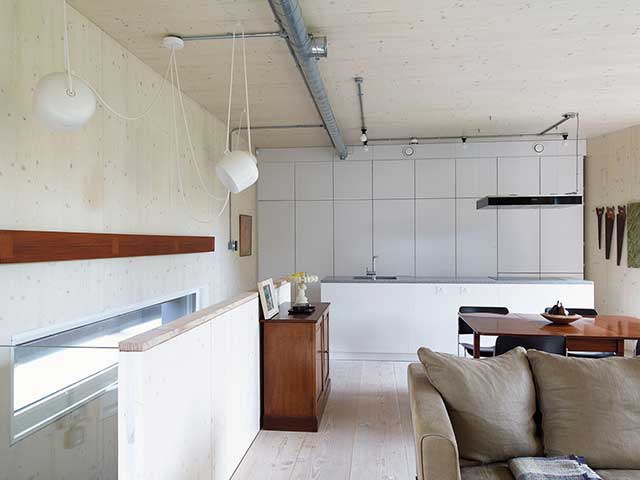
The rigid, spiral-bound steel ducting has been left exposed in some areas of this Passivhaus. Project by Tectonics Architects
Whatever kind of project you are undertaking, MVHR should be factored into the design at the start. ‘The ducting must be installed within the fabric of the building, so it needs to be considered as early as possible,’ says Lucy Holland, marketing executive at Airflow.
‘When the duct paths are already planned and prepared for, it saves time during installation.’ Long, straight runs of ducting provide a better channel for efficient airflow, so try and avoid bends where possible. MVHR can be installed once the house is wind- and watertight and the stud walls are up. Ideally, ducting should be fitted before first-fix plumbing and electrics.
‘The time it takes to install the system depends on the set-up,’ says Lucy. ‘For example, Airflex Pro semi-rigid radial ducting systems are up to 70% quicker to install than a rigid branch set-up in a comparable four-bed house.’ Ducts are installed first, and any that run through unheated voids should be insulated.
‘The air-handling unit is installed at the finish, once the internal doors have been hung.’ says Lucy. ‘In line with regulations, internal doors must have a clear gap beneath to allow air to move around the house.’ MVHR should adhere to Parts F and L of Building Regulations, which cover ventilation and conservation of power. ‘You may also need to be mindful of Part E (resistance to sound), Part B (fire safety) and Part C (resistance to contaminants and moisture),’ explains Lucy.
The vents where air comes in or out, particularly the extract valves, are prone to collecting dust and should be wiped down regularly. You’ll need to clean the external grilles periodically too. A professional service is recommended every six years so the system can be deep-cleaned.
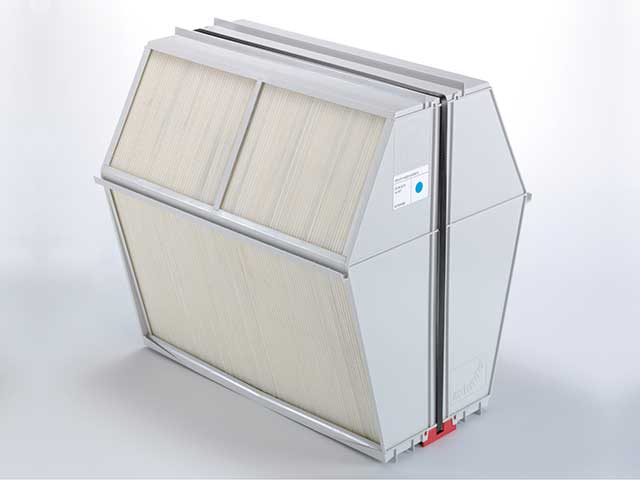
The heat exchanger from a Zehnder MVHR transfers warmth from the outgoing air into the incoming air, keeping it in the house and improving energy efficiency
These can vary substantially depending on the size of the property and the number of rooms. ‘A well-installed system will recover more energy than it uses, with typical running costs of £40 to £80 per year,’ says Larry Soper.
MVHR recovers as much as 80% of the heat extracted from the house and will potentially reduce your annual heating costs as a result. Plus you won’t need to install separate extractor fans and hoods in your bathrooms and kitchen. Your home will still require a separate heating system, but MVHR will ensure it runs as efficiently as possible by recovering energy that would normally be lost via other means of ventilation.
Filters should be cleaned or changed every three months to a year, depending on local environmental conditions. A home near a busy road will need its filters cleaned more regularly than one in the countryside where there’s less pollution.
‘Always isolate the unit when changing the filters. The best systems have a dead man’s switch inside to automatically turn off the fans while they’re being serviced.’ says Lucy. ‘As well as a safety precaution, this prevents the unit from sucking dirty air through the heat exchanger while the filters are out and clogging it up.’
Tell-tale signs that your MVHR is not working properly include evidence of condensation and mould growth. If the system is noisy, that may also indicate an issue. ‘It’s possible that the filters may be blocked and require changing, or that the system is experiencing a high level of resistance,’ explains Larry.
Some products such as Envirovent’s Energisava 200 and 250 units come with an app so that you can monitor the status of the unit, adjust the airflow rates and get notifications when the filters need changing.
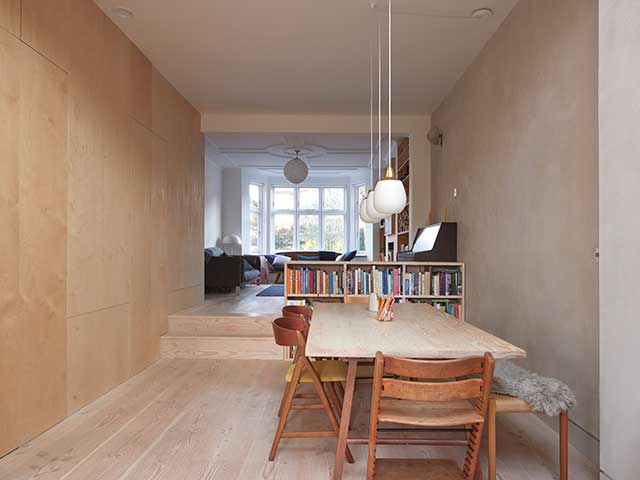
The thermal envelope of this north London house was upgraded to establish a well-insulated, airtight shell. Project by Rise Design Studio. Photo: Edmund Sumner
Installation tips from Tom Heywood, MVHR design manager at Green Building Store: